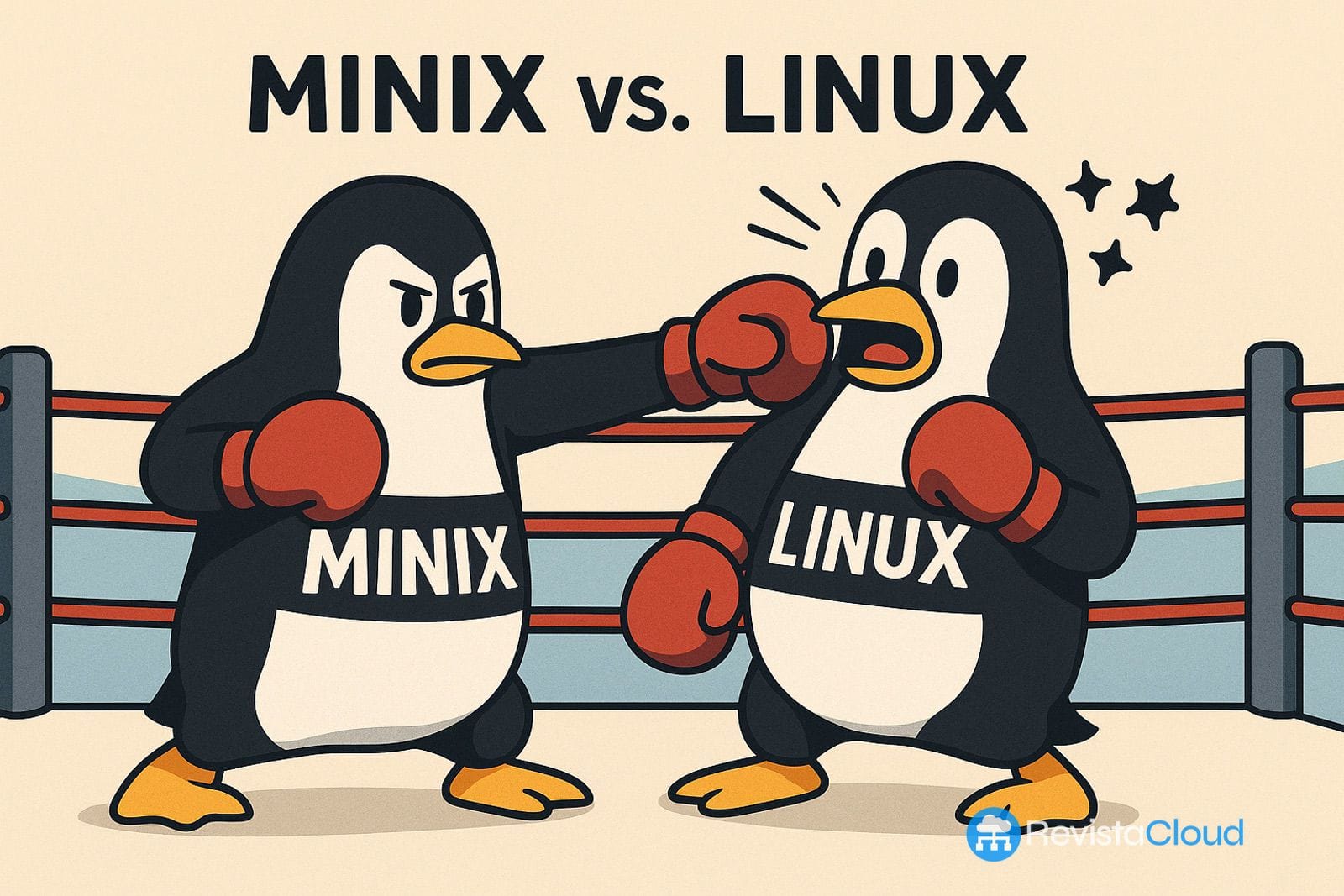The famous discussion between Andrew Tanenbaum and Linus Torvalds was much more than a technical dispute: it confronted two worldviews and charted the course of free software, modern computing, and hacker culture.
In 1992, Andrew Tanenbaum—a distinguished computer science professor and creator of MINIX—posted a message in the comp.os.minix news group that is now part of digital history: "Linux is obsolete." The recipient was a young Finnish student named Linus Torvalds. The reason: Torvalds’s decision to build a monolithic kernel, in contrast to the microkernel architecture that Tanenbaum advocated.
What followed was not only one of the most famous flame wars in Usenet history but also a turning point in the development of free software and a confrontation between academic theory and community pragmatism.
MINIX: academic design, strict control
Tanenbaum had created MINIX as an educational tool to teach the principles of operating systems, especially due to UNIX licensing restrictions in the 1980s. Its design was modular, elegant, and “didactic,” meant to run on limited hardware and enable students to understand each component of the operating system.
However, Tanenbaum maintained strict control over the project. External contributions were scarce or rejected, and the license restricted redistribution of modified versions. For many developers, MINIX was a closed box.
Linux: a hobby with an open spirit
In 1991, Linus Torvalds announced in that same Usenet group his new project: his own kernel for the Intel 386 architecture. He named it Linux and released it as free software. Unlike MINIX, its code was open and free of restrictions, and its attitude was radically different: "If something doesn’t work, send me a patch, and we’ll include it."
Although monolithic—a single piece of software that groups process management, memory, file systems, etc.—the Linux kernel was designed with a pragmatic approach: it had to work well in practice, without worrying about satisfying theoretical ideals.
The discussion: architecture, portability, and philosophy
Tanenbaum’s message accused Linux of being "a step back to the 1970s" because of its monolithic design. He argued that the future lay in microkernels and that being tied to Intel 386 hardware was a fatal mistake. He also questioned portability, compliance with the POSIX standard, and the project’s viability.
Torvalds responded with a mix of humility and firmness. He defended the performance of his kernel, criticized the rigidity of MINIX, and reminded that while he distributed Linux for free, MINIX required payment. "It’s a serious hobby," Linus said, "but one that’s useful."
His response clarified that, although he was a student, his vision was focused on solving real problems, not on pleasing academic egos.
Who was right? Time gave its verdict
Three decades later, Linux dominates modern computing. It powers servers, mobile phones (Android), supercomputers, IoT devices, and the Internet infrastructure. Its monolithic model evolved with dynamic modules, its portability was improved, and its community turned it into a global phenomenon.
In contrast, MINIX became relegated to the educational realm. Although later versions like MINIX 3 introduced advanced capabilities like self-recovery from faults, it never gained traction outside academia.
Years later, Tanenbaum would acknowledge his mistakes: he underestimated performance, overestimated the importance of architecture, and regretted not releasing MINIX under an open license from the beginning.
Lessons from a legendary battle
This clash was more than a technical dispute. It was a collision between:
| Tanenbaum (MINIX) | Torvalds (Linux) |
|---|---|
| Modular microkernel | Pragmatic monolithic kernel |
| Strict academic control | Open and collaborative community |
| Focus on portability from the start | Focus on performance and utility |
| Educational software | Functional and free software |
Torvalds demonstrated that "a useful idea, shared and improved by a community," could overcome any institutional barrier. He was not intimidated by titles or criticism and relied on his judgment and that of his users.
A legacy that remains relevant
The debate between Tanenbaum and Torvalds continues to be studied today as an example of how openness, collaboration, and pragmatism can triumph over closed hierarchical structures.
While MINIX influenced systems like QNX or the Mach microkernel (the basis of macOS), Linux changed the world—not because it was theoretically perfect, but because it "worked, was free, and welcomed anyone who wanted to improve it."
Conclusion
This story is not just about kernels. It’s about how we think about knowledge, innovation, and collaboration. Tanenbaum taught with books. Torvalds taught with code.
And the world chose to learn from both.

